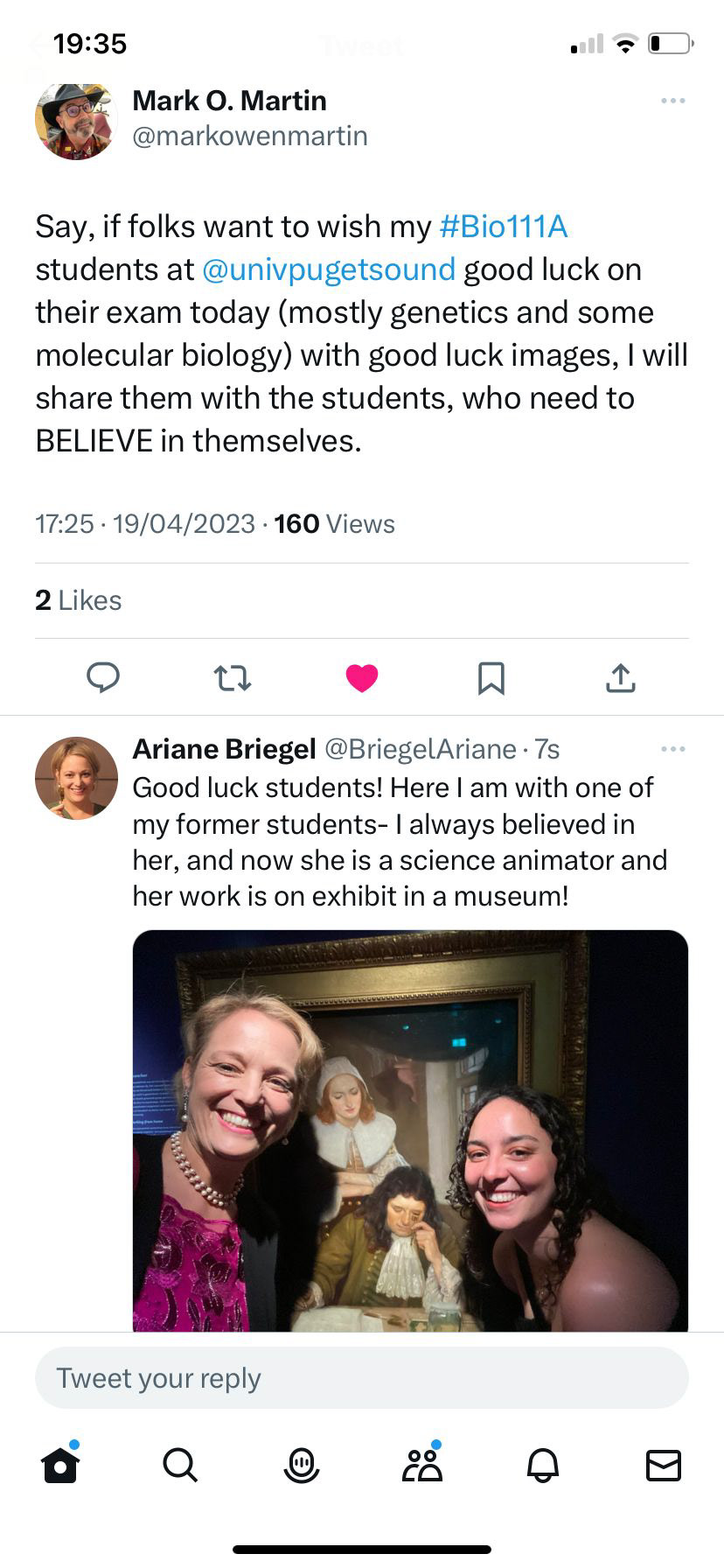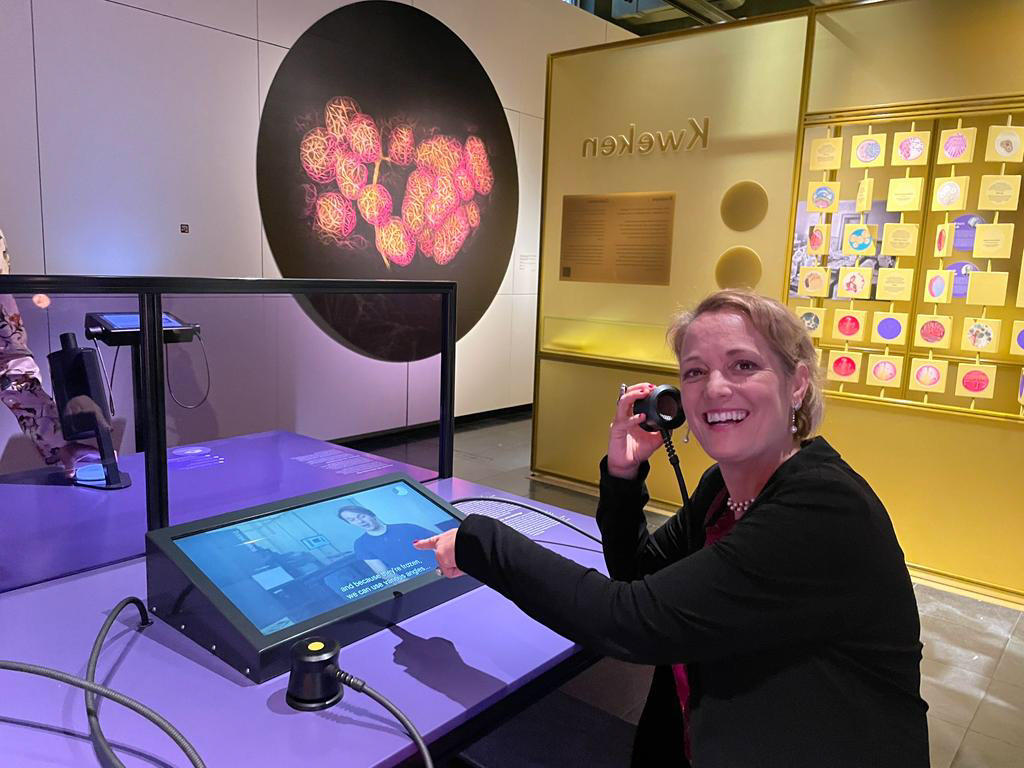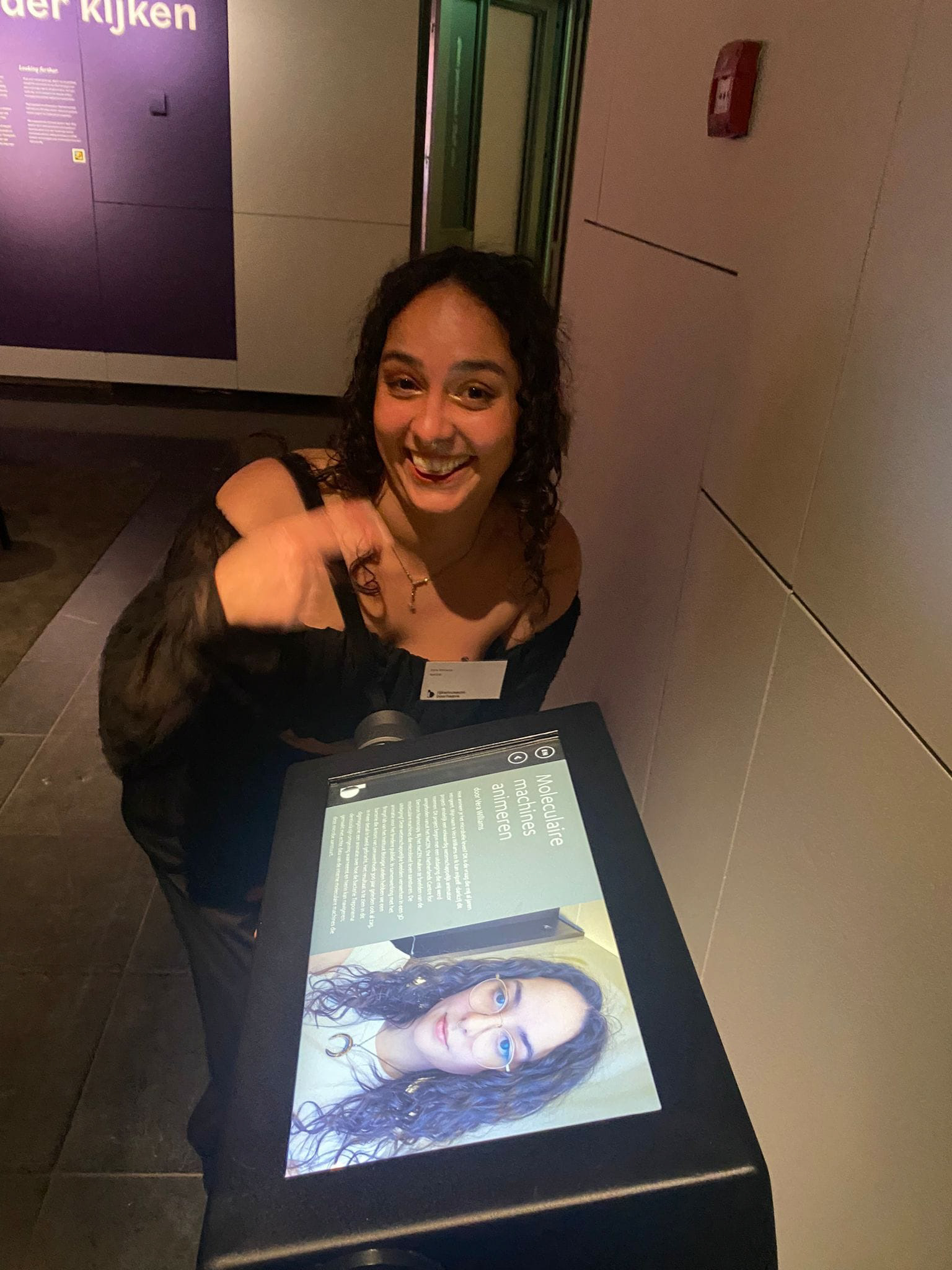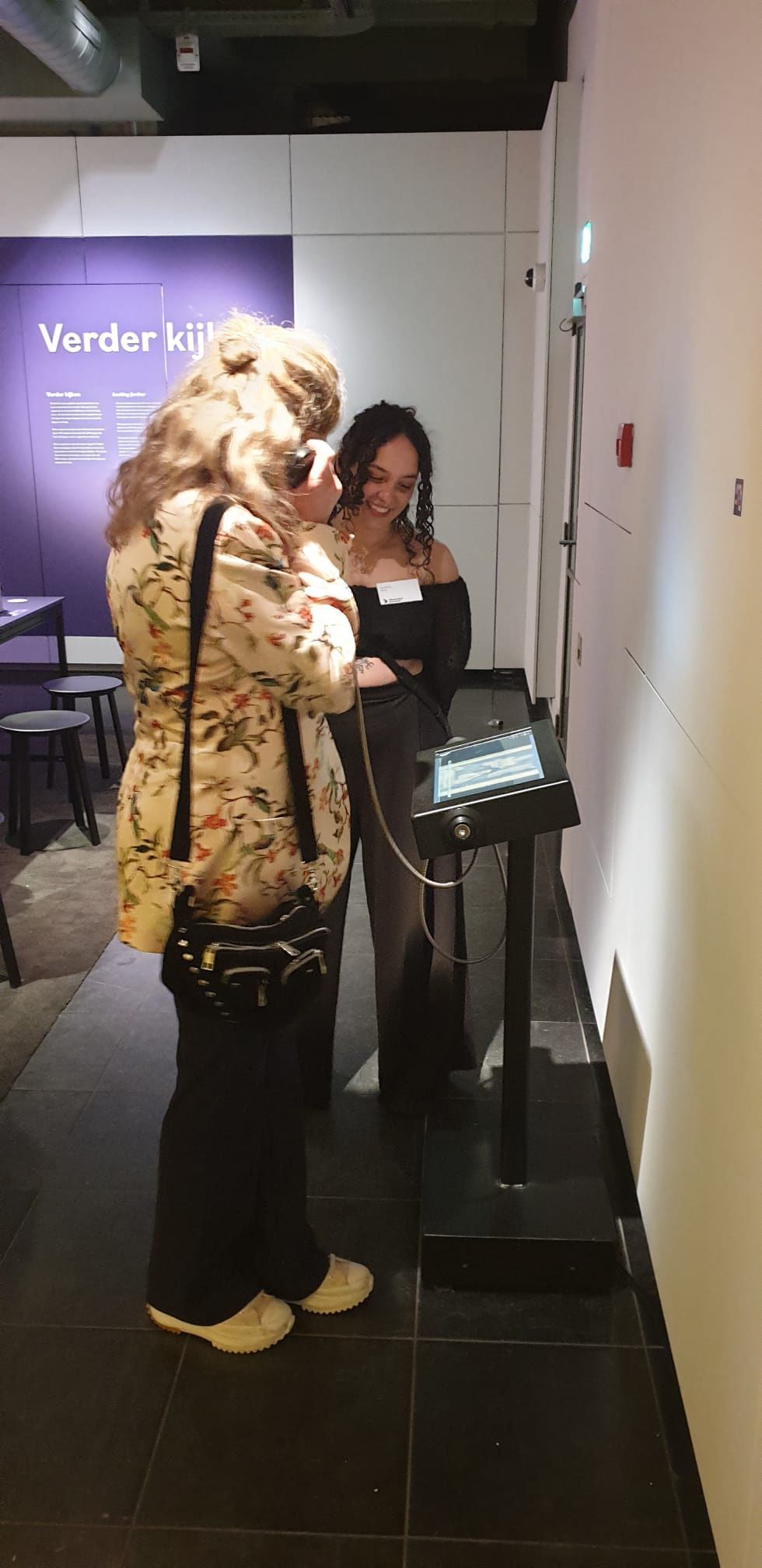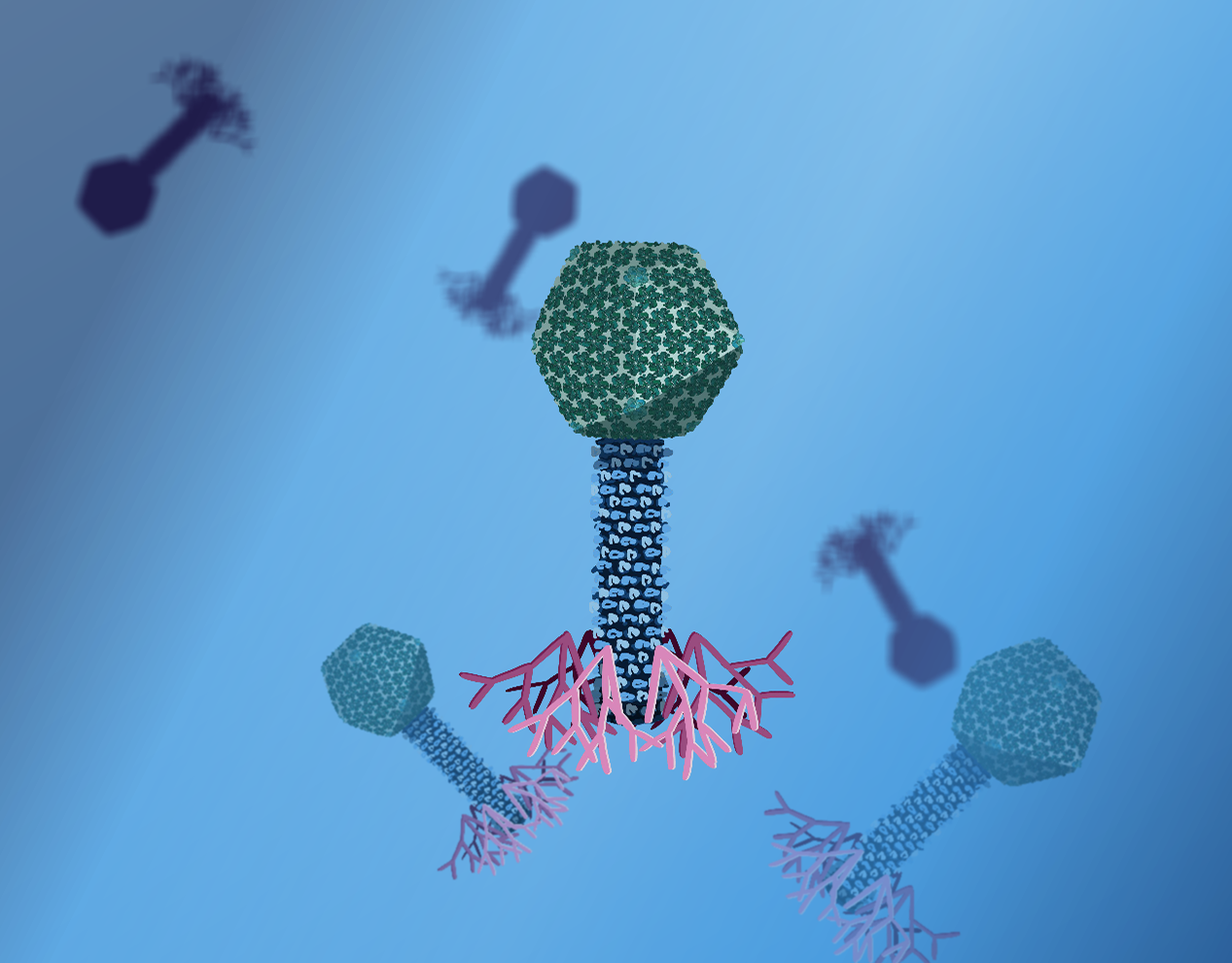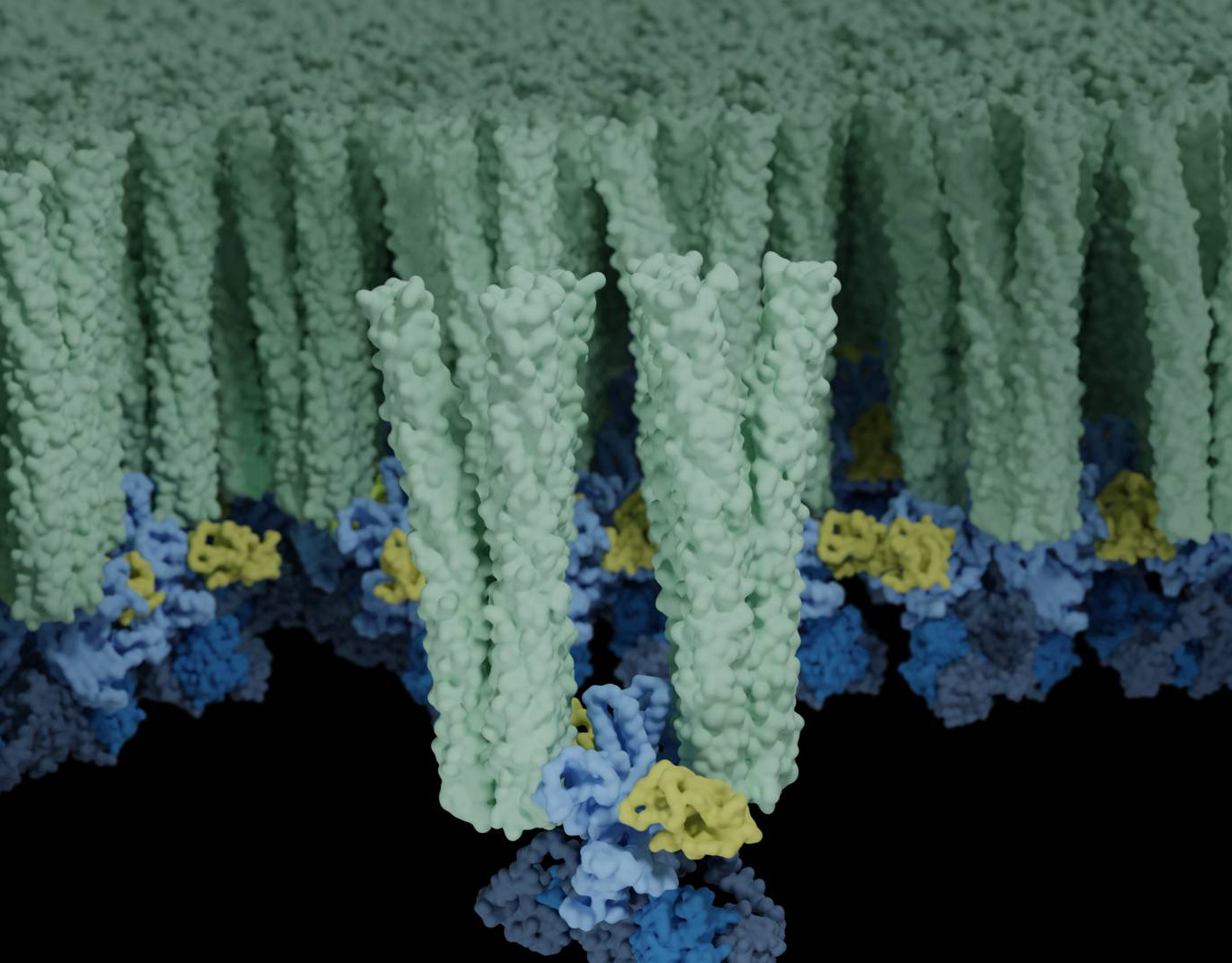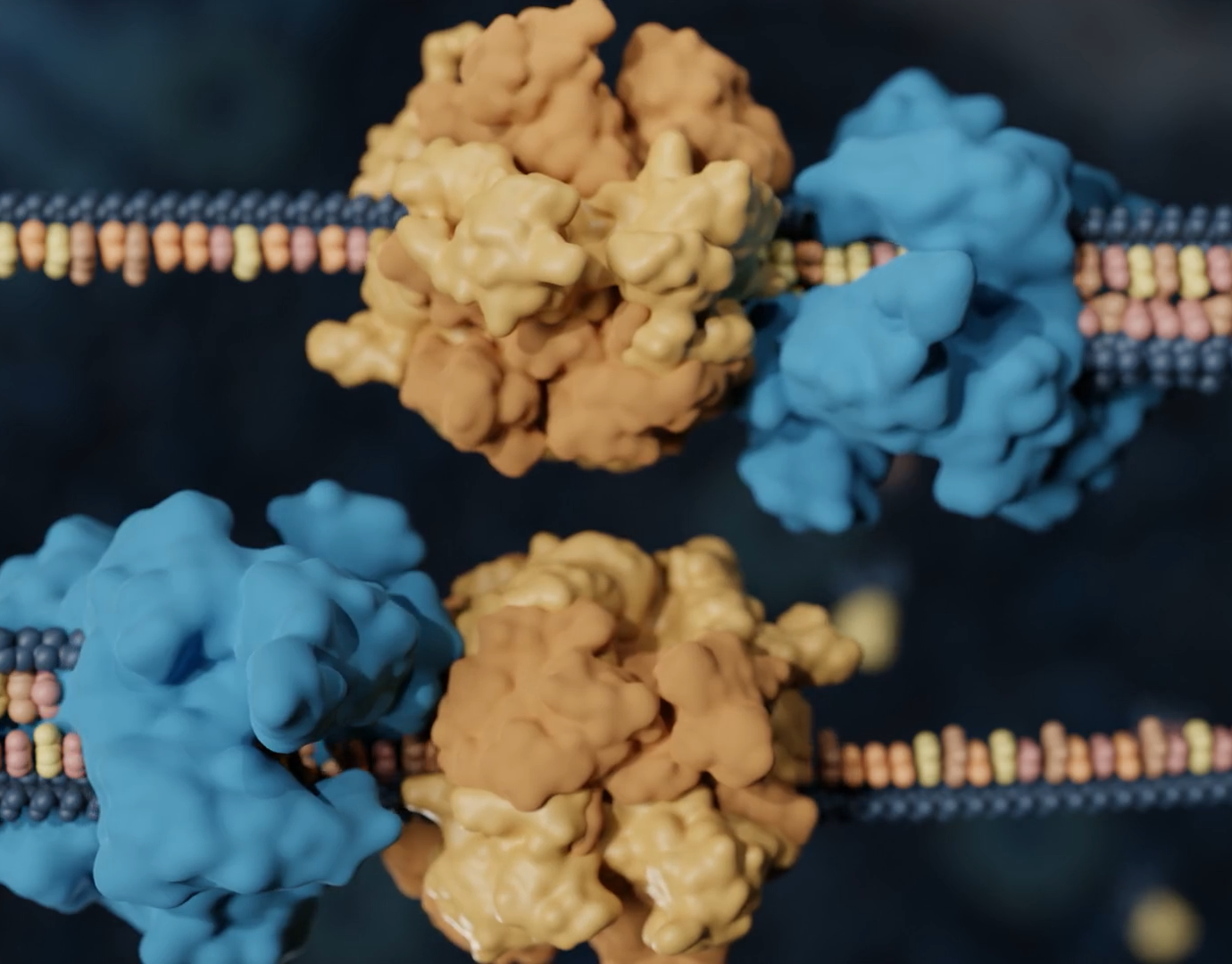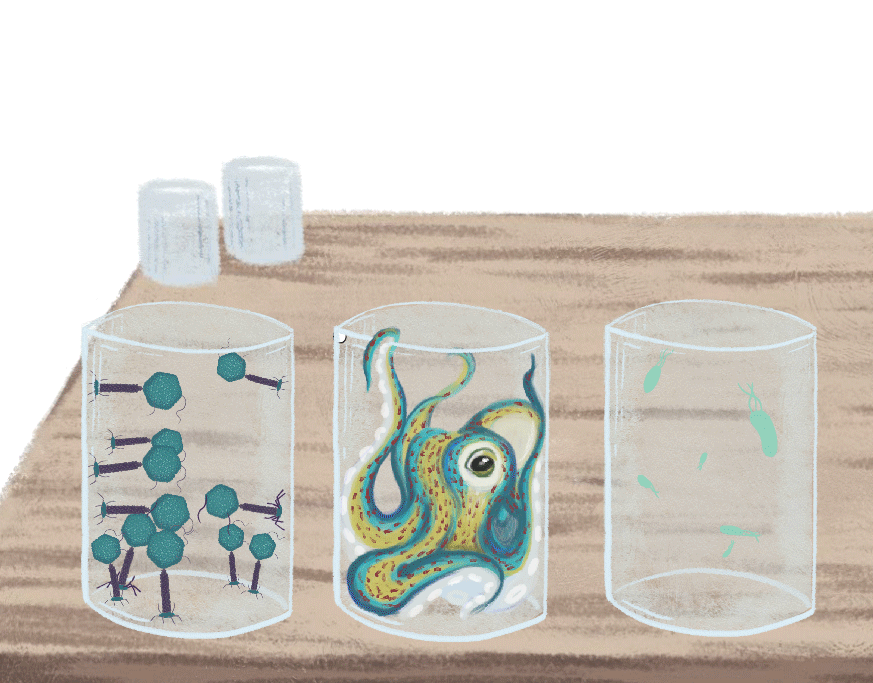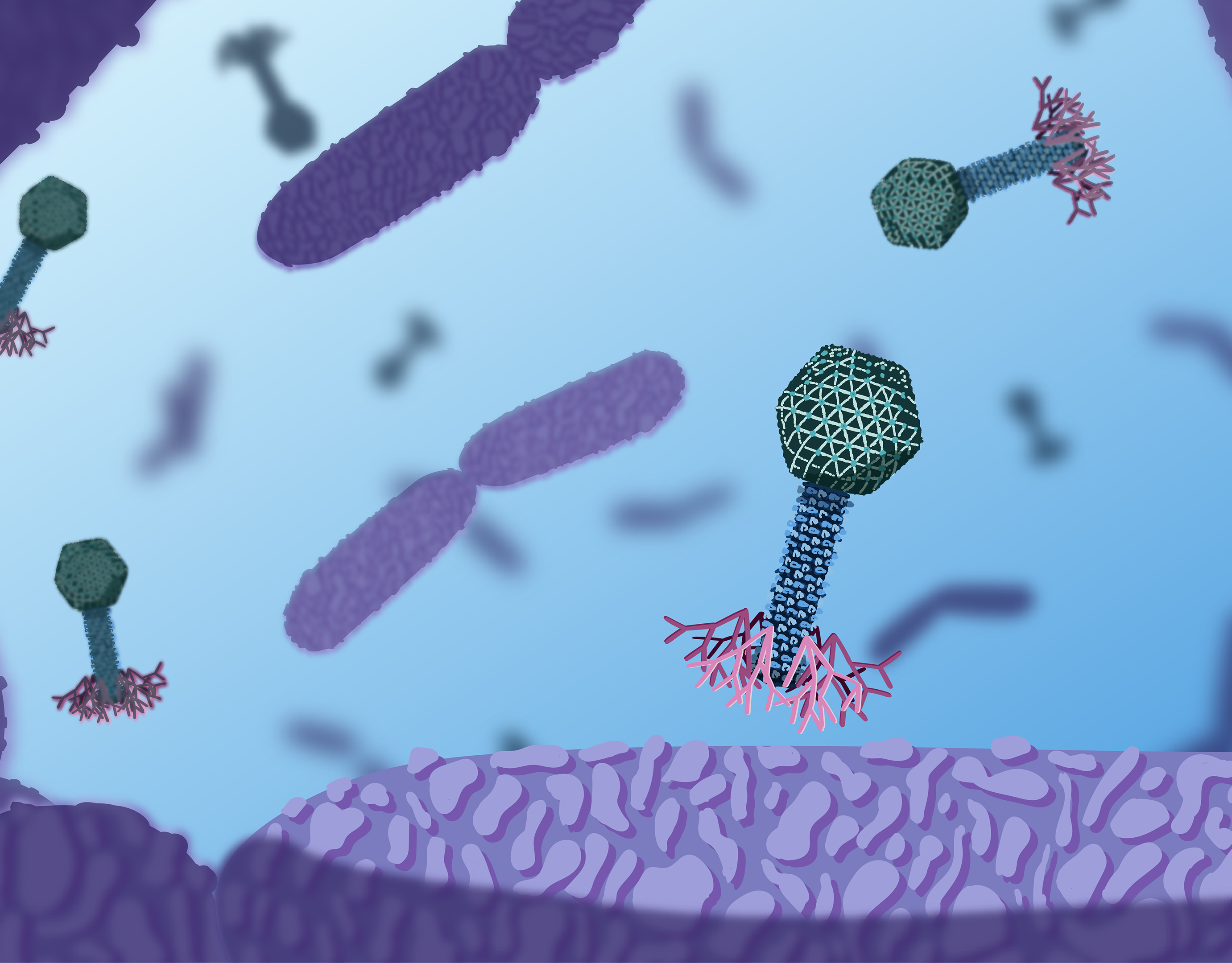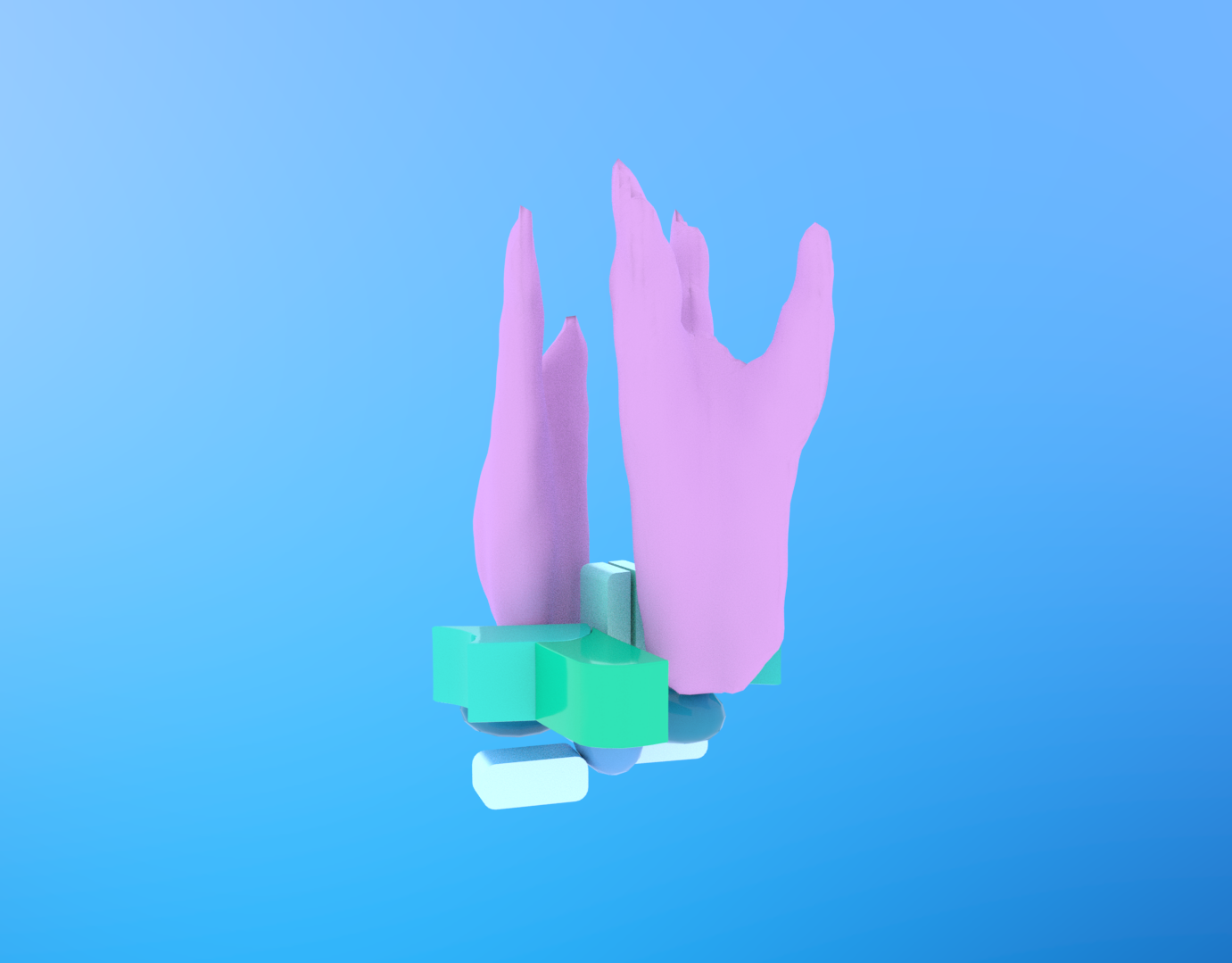This particular project started when I was offered a challenge by NeCEN, the Netherlands Centre for Electron Nanoscopy. At NeCEN they create images of the molecular machines that drive microbial life. The challenge? To create a 3D animation that incorporates this scientific data and is accessible to the general public.
In collaboration with Alise Muok from the Briegel Lab from the Institute Biology in Leiden, we are now able to show you a bacterium that Antoni van Leeuwenhoek already saw 300 years ago, in a lot more detail.
This work is part of the exhibition "Onvoorstelbaar" in the Rijksmuseum Boerhaave in Leiden. "Onvoorstelbaar" is an exhibition on the father of microscopy, Antoni van Leeuwenhoek.
You can visit "Onvoorstelbaar" until January 7th 2024.
Except where otherwise noted this work is protected under https://creativecommons.org/licenses/by-nc-nd/4.0/
The chemoreceptor array
The chemoreceptor array is the microbial nose that Treponema denticola uses for infection. The chemoreceptor array is one of the best-understood structures within biology. The organisation of the molecules is the chemoreceptor array is based on cutting edge research: Dr. Alise Muok from the Briegel lab recently discovered that the enzymes that are controlled by the receptors are not organised in circles but in rows!
Real microscopy data
Did you know that the models of the flagellar motor and the chemoreceptor array are real scientific data? The models have been acquired through the microscopy technique "cryo-electron tomography".
The model of the flagellar motor was originally derived from a different spirochete called Borellia burgdorferi (kudryshev et.al. 2009).
...
This, to me, was the animation where I finally proved myself as a scientific animator. Up to this point, I had (in my opinion) not yet succeeded with a full, scientifically accurate, microbiological animation. Thanks to my amazing supervisor, Ariane Briegel, I was fortunate enough to get this opportunity. She has provided me with the time, funds, resources, and connections to realize my dream of becoming a scientific animator. Ariane, where would I be without you?
As I'm writing this (November 2024), I am about to embark on another journey, with Ariane by my side. I'm writing this for posterity, as a little easter egg for future me to look back to and smile. To see where I came from. I look towards the future with excitement to see where we'll go. Ariane, thank you.
